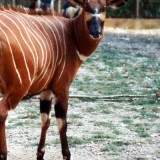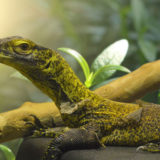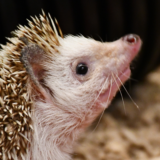RANGE
Found in tropical areas of the Philippines, New Guinea and eastern Indonesia .
HABITAT
Rainforest areas, never far from water.
SIZE
Length: Adults average from 24 – 36 inches. Some males have been recorded to reach 3.5 – 4.0 feet.
LIFE EXPECTANCY
Can easily live more than 10 years. Some captive animals have been known to live more than 20 years.
REPRODUCTION
- Females may lay several clutches of eggs in a year.
- Clutches generally consist of 2 – 8 eggs and are laid in shallow holes dug in the ground near water, but usually above the flood line.
- Young lizards are fast, and are usually able to escape the many types of predators that are trying to catch them. Predators of young Sailfins include snakes, birds and fish.
- Young Sailfin Lizards, like their parents, are excellent swimmers and often take refuge in the water.
DIET
Omnivores.
Feed on plant matter, including young shoots, leaves & fruits, as well as insects and crustaceans.
BEHAVIOR
- When threatened they will be seek water. In diving to the bottom they will seek out a rock or a piece of driftwood on which to cling and can stay submerged for up to 15 minutes or until they feel the threat has passed.
- Are excellent swimmers, which is why their genus name is “hydrosaurus” meaning “Water Lizard”.
STATUS
Common. Are not listed as endangered or threatened at this time. Main threats to the species are pet trade and habitat destruction.







